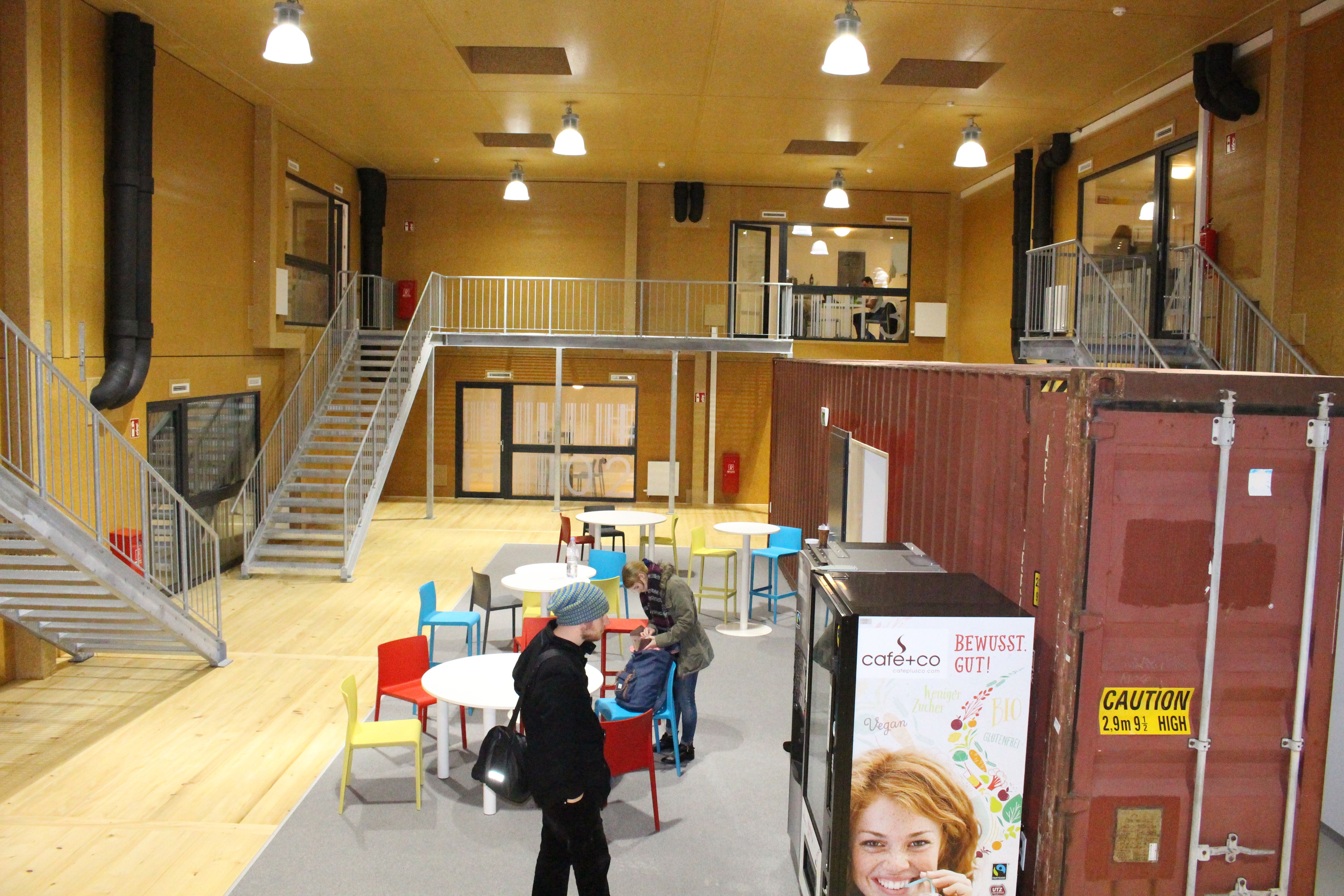
A Passivhaus-certified housing project for students in Vienna, Austria, is built from prefabricated modular units that can be set up in a matter of days and moved to a new location later as needs and land availability change, Germany’s Passivhaus Institut (PHI) said.
The project consists of 10 modular units arranged around a large common atrium with washrooms and a kitchen. Each of the Passivhaus-certified units consists of four rooms (it’s not clear from the description whether this means four bedrooms), two bathrooms, and a common area with a mini-kitchen, PHI said, and was built at below-average costs for the area.
Gunter Lang, a consultant on the project, said in a news release that conventional subsidized social housing typically costs 1450 Euros per square meter in Vienna, the equivalent of $154 per sq. ft. at current exchange rates. This student housing was built for 1140 Euros per square meter ($121 per square foot), and has a much lower annual heating demand than conventional housing–15 kilowatt hours per square meter per year vs. the 25-to-40kwh per sq. meter for conventional housing.
Students living in the project would pay no more than 350 Euros (currently $397) per month for a room, which includes utilities and other ancillary costs.
“This impressively refutes all preconceptions that energy efficiency does not pay off,” Lang said.
Many uses in areas where housing is scarce
Vienna’s project has been promoted as student housing, but the Passivhaus Institut said it also holds promise for other projects in which speedy completion, flexible building layouts, and energy efficiency all are important. One such example PHI cited was refugee housing.
The PopUp-GreenFlexStudios project, as it’s called, was completed in September, spearheaded by Christoph Chorherr, the planning spokesman for Vienna’s Green Party. Chorherr was motivated by an acute shortage of affordable building sites in the city, particularly for student dorms. But he also emphasizes the versatility of the modular units, “especially in view of the current demand for additional housing for refugees,” PHI said.
The Institut said the self-contained units could be set up on lots that are temporarily vacant and moved if the land is needed for another purpose.
Boxes built under cover in two months
At the website of Lang consulting, the units are described as “completely self-sufficient and functional, and can be relocated to various properties five times within 30 years including their furniture.”
Little is known about how the housing is fabricated. The units are apparently built with wood and insulated with some form of mineral wool. Lang describes them as “nogging piece constructions” made without chemical preservatives. But details such as the spacing of studs and cross pieces, the amount of insulation and how the air barrier is formed are not explained. (GBA has asked both Gunter Lang and the architect on the project for more information.)
The units are 5.5 meters by 16.8 meters (18 ft. wide and 55 ft. long).
Lang consulting says this:
“The GreenFlexStudioBoxes were pre-constructed in the weatherproof construction hall within two months, including windows, facing, blinds, doors, furniture, venting, heating, sanitary equipment and lighting. By means of special transporters, the finished boxes were transported from Schwanenstadt in Upper Austria to Vienna overnight.
“At the target location, the 75 sq. meters (807 sq. ft.) accommodation sections were lifted and shifted by a truck-mounted crane and fixed in place. The five ground-floor boxes are set and fixed on deep-seated, prefabricated concrete foundations. The five upper-floor boxes were placed on the ground-floor boxes in an offset order and were efficiently anchored statically. The central hall is also made up of prefabricated wooden parts.
“Afterwards, the boxes only had to be connected to water, power, and canalization on site and were immediately ready for occupation. The setup of the 1000 sq. meters (10,764 sq. ft.) student accommodation on site, including 10 GreenFlexStudioBoxes and an atrium took only one week. The finishing works in the interior and exterior areas can then be completed within three weeks.”
Read more: http://www.greenbuildingadvisor.com/blogs/dept/green-building-news%2A#ixzz3phF0GN00
Follow us: @gbadvisor on Twitter | GreenBuildingAdvisor on Facebook
Fine Homebuilding Recommended Products
Fine Homebuilding receives a commission for items purchased through links on this site, including Amazon Associates and other affiliate advertising programs.

Handy Heat Gun

Reliable Crimp Connectors

8067 All-Weather Flashing Tape
























